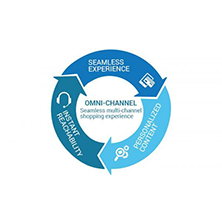In this digital age businesses are serious about leveraging content to improve customer experience. In fact, the ability to do this and do it well can make or break a company’s marketing efforts.
What most marketers are encountering today is a CMS system roadblock caused by mobile, social, and cloud media disruption. The volume and variety of available content is growing like we’ve never seen before; changing the way audiences consume and desire content. Traditional CMS systems just aren’t equipped for this kind of behavior.
To keep up with the changing needs of content marketers, CIOs are asked to stay on top emerging CMS technologies and trends. Until now, the easiest way of staying on track was for a CIO to choose their most familiar platform to help get work done quickly. What we’re seeing now is a change of needs within businesses; simplifying the process for building customer relationships is a top priority.

To help those struggling with these changes, we’ve identified four key factors for choosing a content management system in the digital age.
1. Flexible Architecture
As the portal for customers to access information, a successful CMS needs to be flexible and open enough to accommodate new ways of publishing content. It should also provide the capability to repurpose these materials for use with other marketing campaigns, personalization, e-commerce, and more.
In addition to publishing, production, and distribution, content management systems are seen as a great tool to acquire leads and drive sales. This means the CMS’ flexibility in information and data architecture should allow users to access the system easily across multiple devices, while maintaining content security and information governance practices.
2. Digital Experience
Information management and customer experience management are two of the top necessities for businesses publishing digital content. Organizations are anxious to expand digital experiences specifically, managing the totality of a user’s interaction, and providing the ideal customer experience on every version of their site. This means thinking mobile-first. In order to do that it’s important to understand the kinds of experiences you want to create, and how your target audience will use the system, only after those objectives are decided can you start the build.
3. Privacy and Security
As business expectations change it’s important to optimize existing infrastructure toward customer experience. More and more content is being placed in the cloud, and third party integration grows every day. To cope with this, make sure privacy and security policies are comprehensive, manageable, and robust.
4. Personalized Experience
Aside from scalability, customization flexibility, and performance of the CMS, businesses are recognizing the need for personalized experience and behavior targeting to grow sales. But success in personalization requires the right blend of technology and agility. A capable content management strategy must be flexible to speed up the execution, and adapt to the context being presented.
CMS requirements are changing every day, but modern open source web content management systems like Pimcore and Drupal transcend constraints quite well. They are capable enough to meet businesses’ needs with a lower TCO, and are capable of changing with every new strategy. With options like these available, it’s a good time to think about re-aligning your content strategy.

Balaji has spent over 18 years in the IT Services Industry. With an experience encompassing Services and Product Marketing, he has successfully managed globally distributed Marketing and Product teams. He’s an analytical marketer with strong understanding and experience across marketing strategy, demand generation, field marketing, technology partner marketing, account based marketing, digital marketing, event management, analysis and third party relationship, PR/Media, people management, etc.







